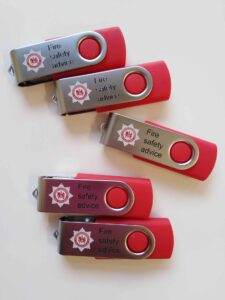8 December 2023
Audio Transcription – it’s more than reading!
Have you ever wondered what goes into producing an audio version of a text document? It’s more complicated than you might think!
There are a few things to think about before one of our audio transcribers even begins to record the document:
Before recording
Depending on the length of the document, the first thing our audio transcribers do is split the document into tracks which are both manageable to read, and to listen to. If the document has a contents, we will usually split the document into the tracks as laid out in the contents, but this doesn’t always work. The way we split the document will also be different if the final audio is for CD or to be used online.
Next we write a short introduction which will tell the listener how long the recording is, how many CD’s the recording is on and how they can navigate through the audio (if they can skip tracks for example).
We then need to look for anything that needs a description, or might take a little longer to deal with when reading the document out. These include:
- pronunciation of names, or places that the audio transcriber is unfamiliar with. This can also include how to pronounce medical terms, or the names of medicines
- working out the best way to read a table or form, so that the information is easily and clearly conveyed to the listener
- writing a description of graphs, flow charts, images, and many other types of diagrams. These can all be included in audio, but writing a description that provides all the necessary information, and also matches the style of the document can take time.
- Changing page references so that they make sense in the recording
Finally, the audio transcriber will check the recording equipment is set up correctly, that they can sit comfortably in front of the microphone, and that the sound levels are correct, and then it’s time to start recording!
Recording the document
If you’ve ever tried to read out a long paragraph of text, you probably know that it’s not as easy as you might think. Long, run-on sentences can trip you up, and a lack of punctuation such as commas can make it hard to know when to take a breath, and uncommon or unfamiliar words can cause you to mis-speak. Our audio transcribers learn how to deal with all of these issues and more, such as making sure their tone is correct for the type of document being read out, and making sure that they sound engaged with the document, and understand the content.
On top of all of this, there’s also abbreviations, acronyms, accents and symbols to deal with. While some, such as “NB” or the @ symbol are easy to work out how to deal with, others can be specific to the document, especially in technical documents or scientific literature, and working these out is an important part of making your audio recording sound natural and authentic.
All of which brings us to the most important part – actually recording the document! We look to read the document in a clear, even tone, at a pace that is easy to listen to, and without distracting changes in volume, or the speed or pitch of the audio transcribers voice.
Take a look at the paragraph below from a document we previously produced – as well as a lot of long sentences with quite clinical language, there are also a lot of names which could have different pronunciations!
Taking care of your voice
One of the most important things our Audio transcribers have to do is take care of their voice. Making sure that your throat doesn’t dry out by drinking lots of water (caffeine and dairy can affect the vocal cords), avoiding smoking, and taking plenty of breaks to rest, are all important. As well as this, we need to make sure we don’t attempt to reach the end of a sentence by stretching our voice, and make sure that we sit with good posture to properly project our voice.
If you’re interested in having your documents audio recorded, why not contact A2i for a quote?
Email: info@a2i.co.uk
Web: a2i.co.uk
Telephone: 01179 440044
Or use our quick quote form.


